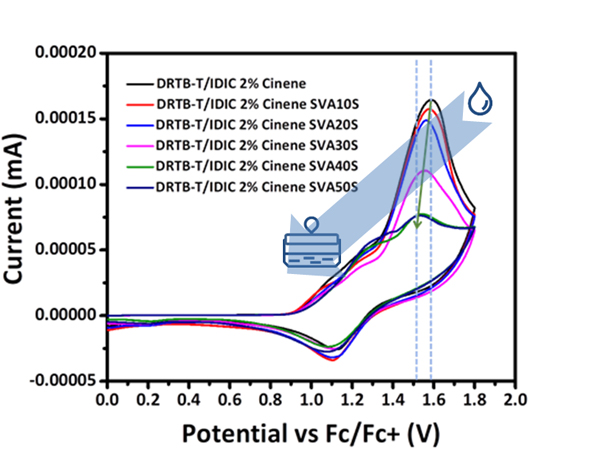No CrossRef data available.
Article contents
Optimized mixed phases to achieve improved performance of organic solar cells
Published online by Cambridge University Press: 17 October 2019
Abstract

In the three-phase (pure donor, pure acceptor, and mixed phases) morphologies of organic solar cells, the mixed phases produce an energy cascade that promotes the generation of free carriers. However, how to optimize the content of the mixed phases is a challenging problem. The authors proposed to control different content of mixed phases in DRTB-T and IDIC blends by additive and solvent vapor annealing (SVA). The authors first formed the largest extent amount of mixed phases by the additive cinene (2%) to inhibit the crystallization of DRTB-T and IDIC. And then, different amounts of mixed phases were achieved by further SVA for different times (from 0 to 50 s) to increase the content of pure DRTB-T and IDIC phases. The energetic offsets (ΔE) of pure and mixed phases gradually decrease from 0.529 to 0.477 eV for different content of mixed phases. When ΔE was 0.498 eV, the highest photocurrent density (Jsc) was obtained. The power conversion efficiency was increased from 3.23% (without any treatment) to 8.54%. Therefore, the authors demonstrated that the optimized content of the mixed phases is critical to device performance.
Information
- Type
- Research Letters
- Information
- Copyright
- Copyright © Materials Research Society 2019


